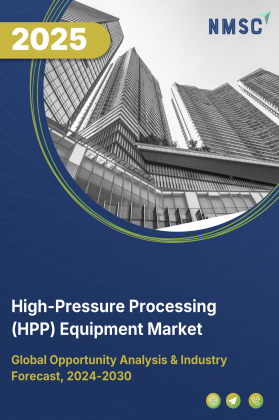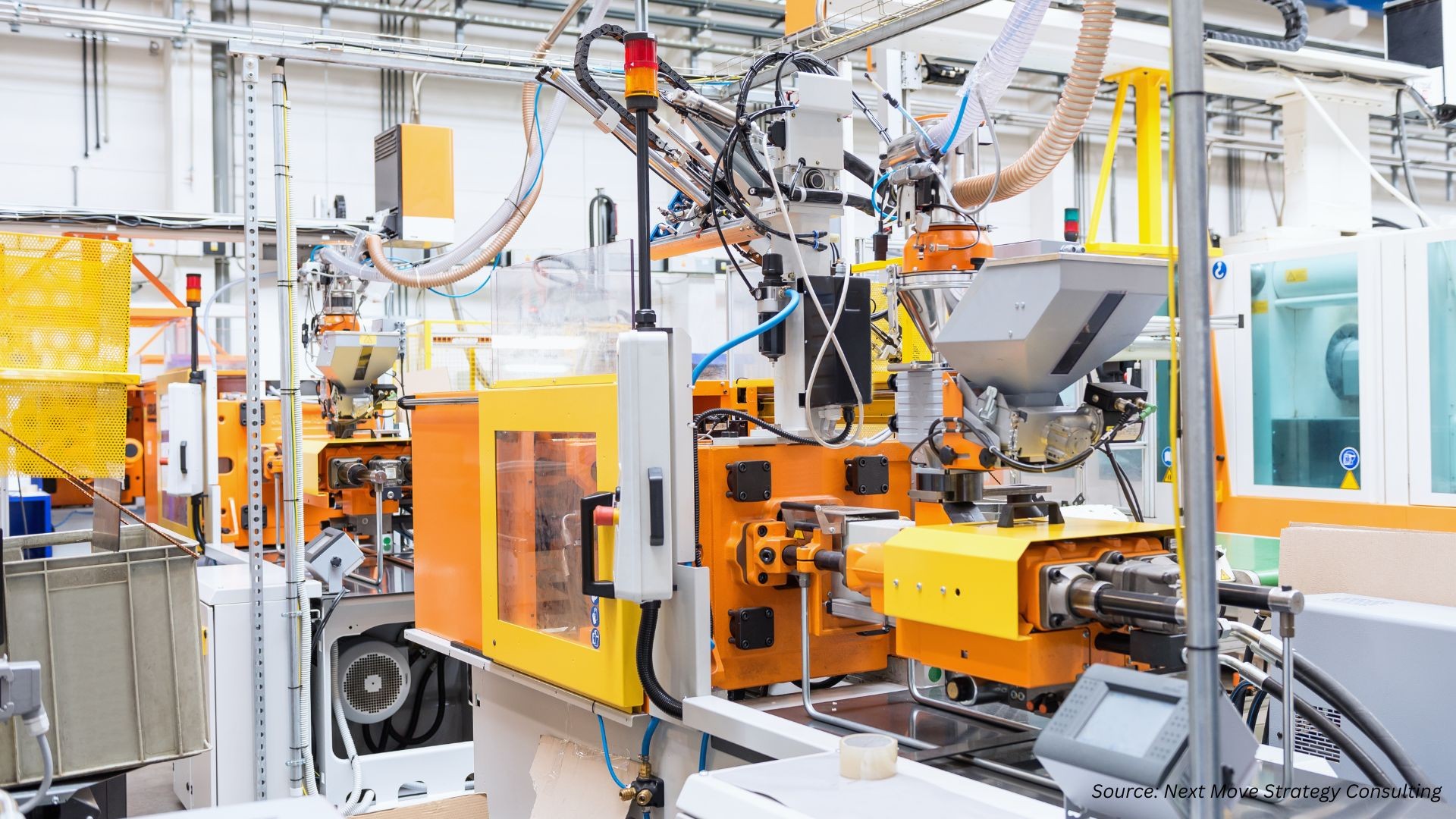
Canada HVAC Systems Market by Equipment (Room‐Level Air Conditioners, Split Air Conditioners, Packaged & Central AC Units, Chillers, Heating Equipment, Ventilation Equipment, Humidity Control, Cooling Towers, and Controls & Thermostats), by System Type (Centralized Systems, and Others), by Implementation Type, by Technology (Inverter Technology, and Others), by Energy Efficiency, by Capacity, by Installation, by End User – Global Opportunity Analysis and Industry Forecast, 2024– 2030
Industry: Construction & Manufacturing | Publish Date: 17-Oct-2025 | No of Pages: 217 | No. of Tables: 236 | No. of Figures: 181 | Format: PDF | Report Code : CM1919
Market Definition
The Canada HVAC System Market size was valued at USD 6.84 billion in 2023, and is predicted to reach USD 8.95 billion by 2030, at a CAGR of 3.4% from 2024 to 2030.
HVAC (Heating, Ventilation, and Air Conditioning) refers to the technology and systems used in buildings to regulate indoor environmental conditions such as temperature, humidity, and air quality to ensure comfort and safety for occupants. Heating systems provide warmth during colder months, ventilation systems circulate and replenish indoor air, and air conditioning systems cool and dehumidify indoor air during warmer months.
HVAC systems offer several advantages, including improved occupant comfort and health, increased energy efficiency leading to cost savings, better indoor air quality through filtration and ventilation, precise temperature control for enhanced productivity in commercial settings, and protection of building infrastructure from extreme weather conditions. Additionally, these systems can be designed to meet specific requirements, contributing to sustainability goals by reducing carbon emissions and promoting eco-friendly practices in building operations.
Federal and Provincial Incentives for Heat Pump Adoption Boost Residential Retrofits
Canada’s HVAC market is experiencing a surge in residential demand due to intensified federal and provincial rebate programs targeting the transition from fossil-fuel heating to electric heat pumps. Programs such as the Canada Greener Homes Grant and initiatives under the CleanBC Better Homes scheme offer homeowners rebates of up to CAD 10,000 for installing air-source and ground-source heat pumps. These financial incentives are further amplified by provincial utilities offering stackable rebates. As a result, older residential buildings—particularly in provinces like British Columbia, Ontario, and Quebec—are being retrofitted at unprecedented rates. This subsidy-driven retrofit wave is stimulating demand across both equipment and professional service segments, fueling steady market growth.
Extreme Weather Patterns and Grid Reliability Concerns Driving Demand for Efficient and Resilient HVAC Systems
The growing frequency of extreme climate events in Canada—including record-breaking heatwaves in western provinces and deep winter freezes in the Prairies—is prompting both consumers and commercial facility managers to prioritize HVAC solutions that balance high efficiency with year-round performance. In parallel, concerns over power outages and rising electricity costs are encouraging investment in smart HVAC systems equipped with backup capabilities, load-shedding features, and integration with residential solar and battery systems. Manufacturers are responding with dual-mode heat pumps, inverter-driven compressors, and grid-interactive controls designed to support demand response programs. This trend reflects a broader shift toward climate-resilient and energy-adaptive HVAC infrastructure across both residential and institutional buildings.
Inflationary Pressures and Skilled Labour Shortages Constrain Market Execution
The Canadian HVAC industry is facing mounting operational challenges due to persistent inflation in construction materials, import-dependent HVAC components, and rising labor costs. While demand for heat pumps and energy-efficient systems continues to grow, project timelines are increasingly delayed by a shortage of licensed HVAC technicians and mechanical contractors—particularly in high-demand provinces like Ontario and British Columbia. This skilled labor gap is further strained by surging retrofit volumes under programs like the Canada Greener Homes Initiative. As a result, HVAC companies face increased installation backlogs and higher project costs, reducing system affordability and slowing deployment rates. The imbalance between demand and on-ground execution capacity is emerging as a key bottleneck to market scalability in the short to medium term.
Climate-resilient HVAC Design and Extreme Weather Adaptation Create New Growth Frontiers
As climate change intensifies the frequency and severity of extreme weather events—such as prolonged heatwaves, winter storms, and wildfire-driven air quality crises—Canada’s HVAC market is seeing a surge in demand for systems designed around climate resilience. Homeowners, businesses, and institutional buildings are increasingly prioritizing HVAC solutions that offer year-round adaptability, advanced air filtration, humidity control, and off-grid functionality through battery or solar integration.
This shift is unlocking new market segments, particularly in areas vulnerable to grid instability or worsening seasonal temperature volatility. HVAC manufacturers are responding with systems engineered for wider thermal ranges, enhanced durability, and integration with emergency ventilation and purification features. At the same time, insurers and municipalities are beginning to offer incentives for installing climate-adaptive HVAC technologies in both new builds and retrofits.
As public and private sectors align around resilience-focused infrastructure planning, HVAC providers that deliver adaptive, high-efficiency, and health-centric systems stand to gain a competitive edge. This evolution signals a transition from traditional comfort-centric HVAC to climate-resilient and wellness-enhancing solutions—positioning the market for long-term growth in an era of environmental unpredictability.
Competitive Landscape
The market players operating in the Canada HVAC System market include Lennox International, Carrier Canada, Daikin Industries, Samsung, Rheem Manufacturing Company, Johnson Controls, Fujitsu General Canada, Napoleon, Glen Dimplex Americas, Trane, LG Electronics, Bosch, Mitsubishi Electric, Midea, and Panasonic, and Others.
The Canada HVAC System Market Key Segments
By Equipment
-
Room‐Level Air Conditioners
-
Window
-
Portable
-
Cassette (ceiling-mounted)
-
Floor-standing console
-
-
Split Air Conditioners
-
Single-split (1 indoor + 1 outdoor)
-
Multi-split (≥2 indoors + 1 outdoor)
-
VRF/VRV
-
-
Packaged & Central AC Units
-
Rooftop packaged units
-
Self-contained packaged units
-
Central chiller and AHU systems
-
-
Chillers
-
Air-cooled
-
Water-cooled
-
Absorption
-
-
Heating Equipment
-
Heat Pumps
-
Furnaces
-
Boilers
-
Unit Heaters
-
-
Ventilation Equipment
-
Air Handling Units (AHUs)
-
Fans & Blowers
-
Air Filtration Systems
-
Air Purification Systems
-
-
Humidity Control
-
Humidifiers
-
Dehumidifiers
-
-
Cooling Towers
-
Controls & Thermostats
By System Type
-
Centralized Systems
-
Decentralized Systems
-
Hybrid Systems
By Implementation Type
-
New Construction Buildings
-
Retrofit Buildings
By Technology
-
Inverter Technology
-
Non-Inverter Technology
-
Smart/IoT-enabled
-
Conventional
By Energy Efficiency
-
1 Star
-
2 Star
-
3 Star
-
4 Star
-
5 Star
By Capacity
-
Up to 1.5 Ton
-
1.5-3 Ton
-
3-5 Ton
-
Above 5 Ton
By Installation/Mounting
-
Wall-mounted
-
Ceiling-mounted
-
Floor-standing
-
Ducted
-
Window-mounted
-
Portable
By End User
-
Commercial
-
Offices
-
Hospitality (Hotels, Restaurants)
-
Healthcare
-
Education
-
Retail
-
Airports
-
-
Residential
-
Industrial
Key Players
-
Lennox International
-
Carrier Canada
-
Daikin Industries
-
Samsung
-
Rheem Manufacturing Company
-
Johnson Controls
-
Fujitsu General Canada
-
Napoleon
-
Glen Dimplex Americas
-
Trane
-
LG Electronics
-
Bosch
-
Mitsubishi Electric
-
Midea
-
Panasonic
Report Scope and Segmentation
|
Parameters |
Details |
|
Market Size in 2023 |
USD 6.84 Billion |
|
Revenue Forecast in 2030 |
USD 8.95 Billion |
|
Growth Rate |
CAGR of 3.4% from 2024 to 2030 |
|
Analysis Period |
2023–2030 |
|
Base Year Considered |
2023 |
|
Forecast Period |
2024–2030 |
|
Market Size Estimation |
Billion (USD) |
|
Growth Factors |
|
|
Companies Profiled |
15 |
|
Market Share |
Available for 10 companies |
|
Customization Scope |
Free customization (equivalent up to 80 working hours of analysts) after purchase. Addition or alteration to country, regional, and segment scope. |
|
Pricing and Purchase Options |
Avail customized purchase options to meet your exact research needs. |

















 Speak to Our Analyst
Speak to Our Analyst
























